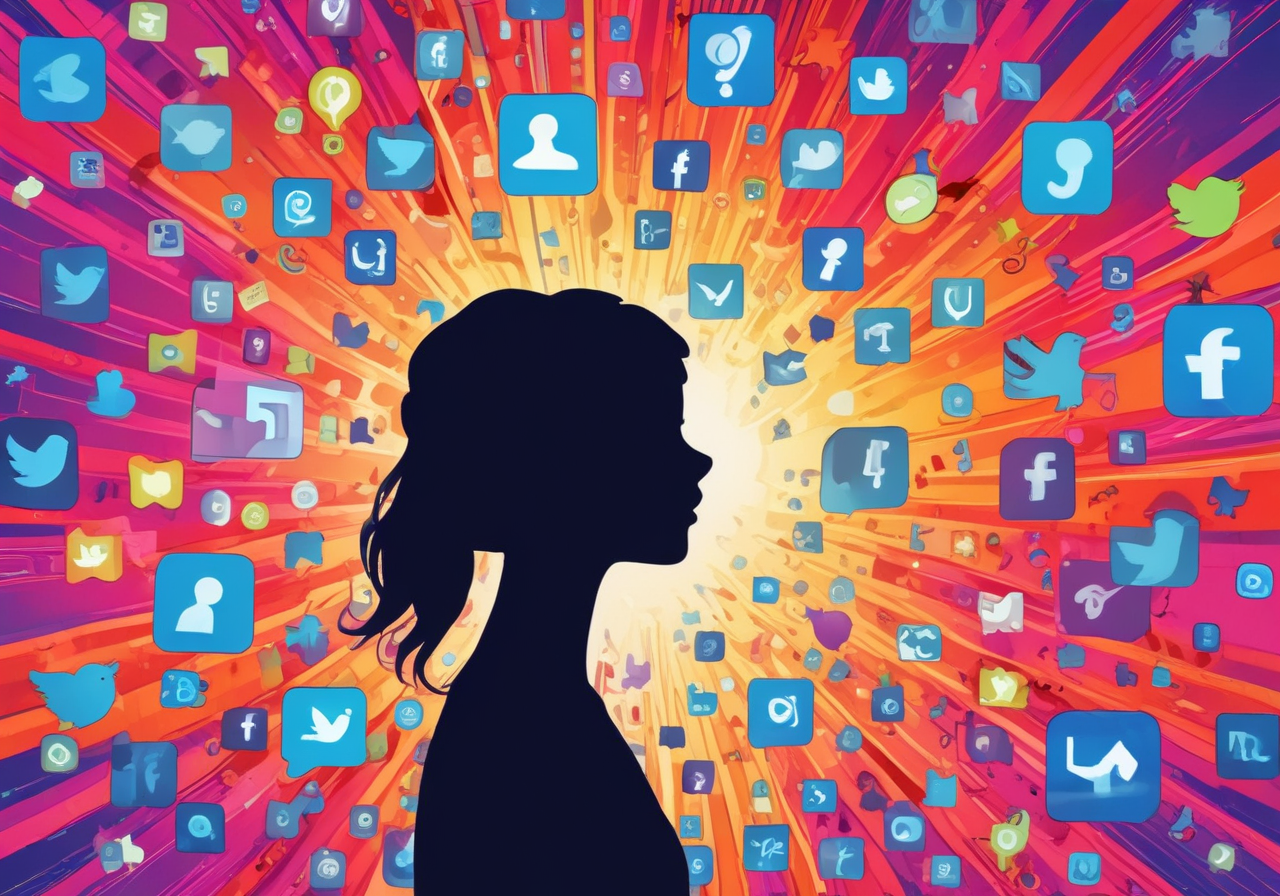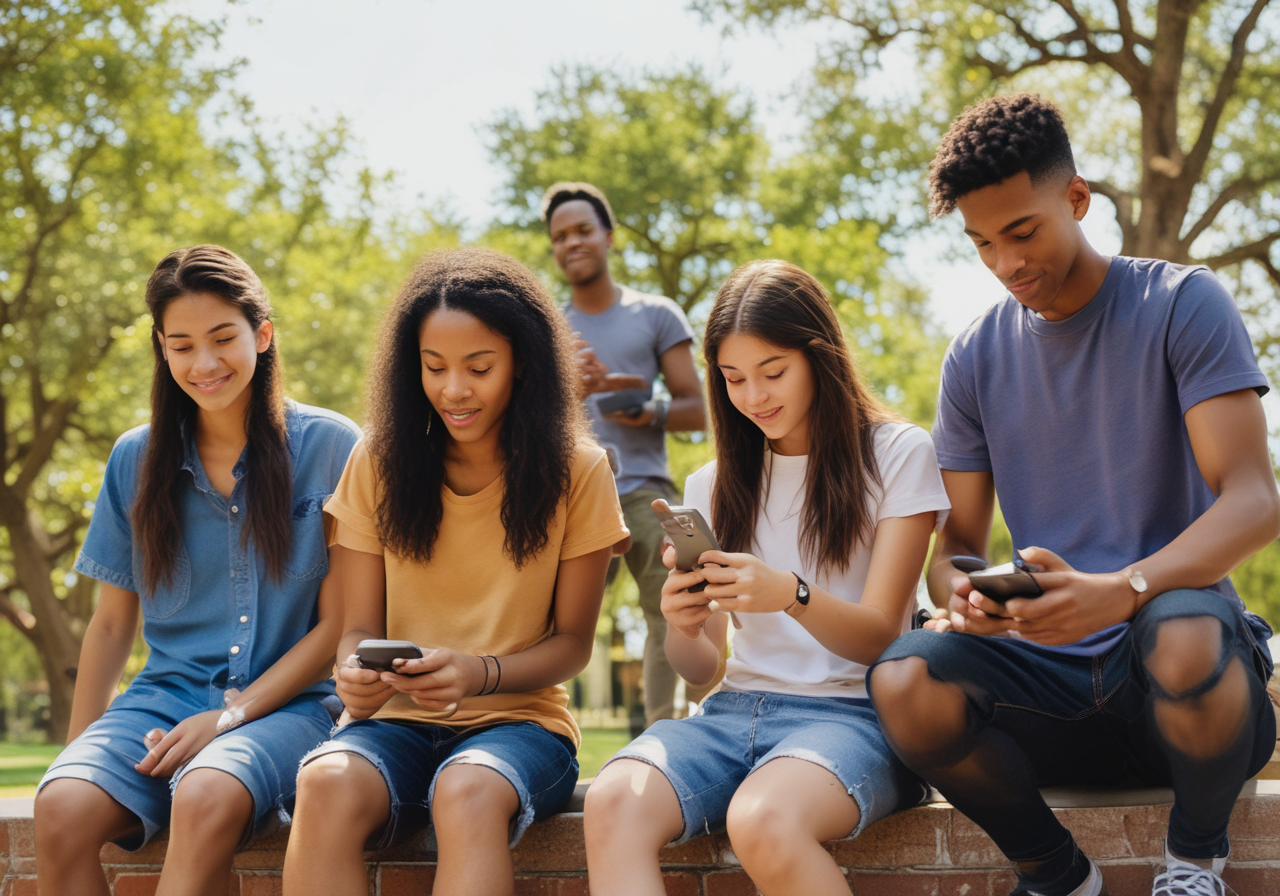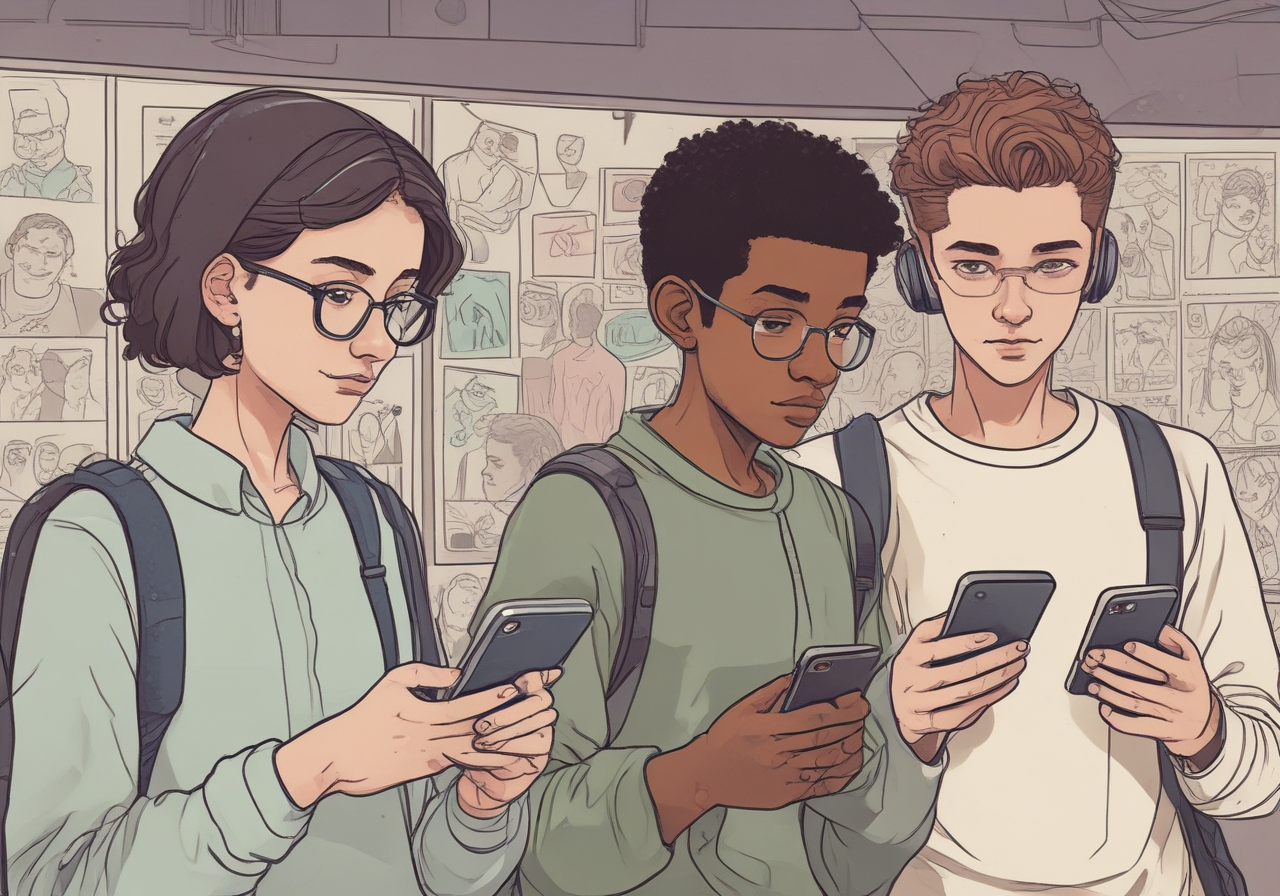
Teen mental health is a growing concern in today’s digital landscape, especially as social media becomes a central part of young people’s lives. In Houston and across the United States, teens are constantly connected through various platforms, experiencing both the upsides and downsides associated with these networks. The link between social media and mental health issues is complex, raising questions for parents, educators, and teens themselves about how online engagement might influence emotional well-being and everyday life.

Across Houston and the wider United States, social media use is almost universal among teens. Platforms like YouTube, TikTok, Instagram, and Snapchat are deeply woven into the fabric of teen social life. These networks serve as both a means of connection and a source of information, with the majority of young people accessing social media accounts daily. Since the COVID-19 pandemic, teens have spent even more time online, relying on social media to maintain friendships and cope with isolation during lockdowns. However, this increased use has also been linked to changes in mental health outcomes, with some teens experiencing higher levels of anxiety, loneliness, and stress as a result of both greater social media exposure and limited in-person interaction.
Local trends in Houston reflect larger national patterns. Teens here follow the same platforms and display similar behaviors, from sharing creative content to seeking social support. However, they also face the same mental health challenges emerging from high social media use, such as anxiety, depression, and disrupted sleep. Understanding these patterns is essential for addressing teen well-being.
Social media platforms have become a staple in the lives of American teens, with YouTube, TikTok, Snapchat, and Instagram leading the pack. According to recent surveys, up to 95% of teenagers (ages 13 to 17) in the United States report using at least one social media platform, and over a third admit to being online “almost constantly.” Facebook and Twitter (now X) have seen a drop in popularity among this age group, while newer apps frequently emerge, attracting young users seeking new experiences.
Teens typically invest several hours each day on these platforms. Many report that this screen time strengthens friendships and enables creative self-expression. However, increased engagement can also lead to negative effects, such as feeling overwhelmed by drama or pressured to maintain an appealing online presence.
How much time teens spend on social media daily varies widely. Excessive use is associated with poorer mental health outcomes, including depression, anxiety, and reduced sleep quality, as highlighted by the U.S. Surgeon General and recent Pew Research Center findings.
Screen time among teens is a hot topic for families and mental health professionals alike. On average, American teens spend multiple hours each day engaged with social media, and many feel that they spend “too much time” online. In the Houston area, these patterns align closely with national trends, with 45% of teens admitting to excessive screen time.
Regional differences can sometimes influence how much time is spent online. Factors such as cultural attitudes, socioeconomic status, and local internet access shape both the amount of time and how platforms are used.

Spending this much time online has been linked to disruptions in physical activity, sleep routines, and, ultimately, mental well-being.
While much focus is placed on the risks, social media also offers significant benefits for teen mental health. Many young people credit these platforms with helping them feel more accepted and providing access to supportive communities, especially those who may not find such support offline.
The positive effects extend to social interactions, creative outlets, and global awareness. For countless teens, platforms serve as safe spaces to express themselves, share experiences, and find others who understand their struggles—benefits that can lift confidence and foster healthy relationships.
Online social interactions are a defining feature of teen social media use. These digital spaces help teens deepen bonds with friends, forge new relationships, and find support during tough times. Much of the value comes from the sense of belonging and acceptance they experience online.
However, not all experiences are positive. Some teens feel overwhelmed by online drama or excluded from certain groups. The most significant ways social media affects teen mental health include both building strong support systems and, at times, exposing users to negative peer comparisons or pressures.
For young people, social media is often a stage for creativity and self-expression. Platforms like Instagram, TikTok, and YouTube enable teens to showcase their talents, interests, and personalities to a wide audience. This exposure can boost confidence and help individuals explore their identity.
Yet, creativity online is a double-edged sword. While it nurtures self-expression and positive mental health, it can also lead to social comparison or disappointment if feedback is negative or absent. The most significant ways social media affects teen mental health, therefore, are nuanced—balancing empowerment with vulnerability.

Despite its advantages, the negative effects of social media on teen mental health are well documented. Many teens and parents are concerned about rising rates of depression, anxiety, and poor self-esteem linked to time spent online. Research highlights that excessive use and exposure to certain types of content can worsen existing mental health problems or trigger new challenges.
The constant pressure to present a perfect image or meet social expectations online often leads to stress and emotional exhaustion. These mental health issues underscore the importance of healthy social media habits.
A growing body of research indicates a strong link between high social media use and increased risks of anxiety, depression, and low self-esteem among teens. The U.S. Surgeon General and organizations like the American Psychological Association highlight that adolescents spending more than three hours daily on social platforms face double the risk for negative mental health outcomes, including depressive symptoms.
Girls appear especially vulnerable. They are more likely than boys to report feeling that social media has hurt their confidence, sleep, and mental health overall. Content that promotes unattainable body images or glamorizes certain lifestyles can deepen insecurities and foster a constant sense of inadequacy.
Expert opinion is clear: while not every teen will be affected, vulnerable adolescents and those with existing mental health issues are at higher risk when exposed to negative messaging, cyberbullying, or social comparison on social media.
Cyberbullying and online harassment have emerged as serious risk factors for mental health issues in Texas schools and beyond. Teens who experience bullying online are at a heightened risk for depression, anxiety, and even suicidal thoughts. Harmful interactions can take place on any platform but are often intensified by the anonymity or reach of social media.
Research suggests that platforms encouraging visual self-presentation or public commentary may increase the risk of bullying. Parents, teachers, and community leaders need to remain vigilant and respond quickly to signs of cyberbullying or abuse.
Identifying the warning signs of social media-related mental health concerns is vital for early intervention. Teens struggling with negative mental health outcomes may not always voice their struggles, making it crucial for parents and caregivers to observe changes in mood, behavior, or habits.
Look for red flags such as withdrawal from family, declining academic performance, or sudden mood swings. Recognizing these signs early allows for timely conversations and targeted support, helping prevent more severe mental health issues down the line.
Watching for behavioral changes in teens is key to catching emerging mental health concerns tied to social media use. These shifts may be subtle at first but can signal deeper problems if left unaddressed.
If you observe these behavioral changes, it’s essential to ask open-ended questions and offer support without judgment. Engaging your teen in conversation about their social media experiences can help uncover potential problems and build trust.
Physical and emotional symptoms can reveal when social media is impacting a teen’s mental health. Prolonged screen time is often associated with disrupted sleep, increased fatigue, and decreased physical activity—all of which affect well-being.
These signs often develop gradually. Parents should pay attention to changes in energy, mood, and routine, and encourage healthy sleep and exercise habits as part of a balanced approach to digital life.

Some social media platforms and content types pose greater risks to teen mental health than others. Visual-focused platforms—where image and video content dominates—can increase exposure to unrealistic standards or potentially harmful trends. Text-based networks also present challenges, including cyberbullying and negative discussions.
Identifying which platforms and content types are most problematic allows parents and teens to make informed choices. Harmful content can range from body image pressures to risky viral challenges, underscoring the need for digital literacy and critical thinking skills.
Not all social media platforms influence teens the same way. Visual-based platforms like Instagram, TikTok, and Snapchat encourage users to share photos and videos, fostering creativity but also elevating risks of comparison and body image concerns. These platforms often amplify societal pressures to look or act a certain way.
Text-based platforms, including X (formerly Twitter) and Reddit, may expose teens to harsh debates, public criticism, or misinformation. While they can stimulate intellectual engagement, they also carry risks such as cyberbullying or social exclusion.
Current research suggests visual platforms can be especially harmful for teens’ mental health, as they highlight appearance and lifestyle comparisons. Both types, however, require parental oversight and ongoing conversations about healthy engagement.
Viral content and risky trends frequently circulate on social media, posing new challenges for Houston teens. These trends range from harmless pranks to dangerous challenges that can put physical and mental health at risk.
These negative effects show why it’s important for families and schools to discuss the risks associated with following trends blindly. Promoting digital literacy helps teens recognize and avoid harmful viral content.
Algorithms on social media platforms create tailored content that enhances user engagement, but they also contribute to feelings of FOMO. This phenomenon is particularly pronounced among young users, who may feel compelled to remain constantly connected. High social media use can exacerbate mental health concerns, including poor body image and anxiety, as users compare themselves to idealized versions of peers. Consequently, understanding the influence of these algorithms is crucial for fostering a healthy relationship with social media, mitigating potential risks, and promoting better mental health outcomes.
Personalized social media feeds are built to keep users scrolling. Algorithms analyze your interests and behavior, curating content that is likely to grab your attention. For teens, this means they’re more often exposed to trends, discussions, or images that align with their insecurities or interests.
Social media platforms capitalize on this engagement by encouraging reactions, shares, or participation in viral challenges. The pressure to post, like, or comment can turn simple browsing into an obligation.
These patterns make it hard to step back or use social media in a balanced, healthy way.
Social comparison is a major factor in how social media affects teen mental health. Seeing peers’ successes, curated photos, or seemingly perfect lifestyles can trigger self-doubt and dissatisfaction with one’s own life. This psychological toll is especially sharp for issues like body image, academic achievements, or social status.
Research consistently finds that frequent social comparison on social media is correlated with higher rates of anxiety and depression. Teens who already struggle with self-esteem are particularly vulnerable to these effects, as repeated exposure to idealized content reinforces negative self-perceptions.
Expert opinions align: “Social media creates a fake world that distances teens from reality,” as one parent described. Recognizing these dangers allows families to foster healthier perspectives and decrease the negative impact of constant comparison.

Parents play a vital role in encouraging healthy social media use. By setting expectations and modeling positive digital behavior, families can reduce the risks associated with excessive screen time. Digital literacy—understanding how social media works and its potential risks—empowers both teens and parents to make better choices.
Open communication is crucial. When parents talk with their children about mental health, privacy, and safe online interactions, they create a foundation for trust and resilience. Setting boundaries and practicing mindful usage will be explored in the next sections.
Establishing clear boundaries and digital curfews helps teens balance online interactions and real-world responsibilities. Rules should be consistent but flexible enough to adapt as kids mature. Parents who lead by example—putting devices away during family time—send a strong message about priorities.
A healthy way to introduce boundaries is by discussing the reasoning behind them—focusing on well-being, productivity, and maintaining meaningful offline connections. Teens are more likely to respect limits when they feel included in the process.
Mindful usage of social media means being aware of how, when, and why you engage with platforms. Parents can encourage this by talking about the emotional impact of online experiences and helping teens recognize when digital habits are becoming unhealthy.
By building trust and keeping lines of communication open, families can address concerns early and support each other. When teens know they’re not alone in navigating the digital world, they’re better equipped to establish a healthy relationship with technology.
In conclusion, the relationship between social media and teen mental health is complex, with both positive and negative impacts. While platforms can provide essential support and creative outlets for teens, they also pose significant risks, including anxiety, depression, and the detrimental effects of cyberbullying. As parents and guardians, it is crucial to stay informed about these dynamics and recognize the warning signs of social media-related mental health issues. By fostering open communication and encouraging mindful social media habits, we can help our teens navigate these challenges more effectively. If you're seeking more personalized guidance on this matter, don't hesitate to reach out for a free consultation with our experts.
Riaz Counseling in Texas accepts insurance from a variety of providers, including Blue Cross Blue Shield of Texas (BCBSTX), Optum, Magellan, Aetna, Cigna, and several others. This broad acceptance helps ensure that more teens can access essential mental health support services. To support adolescent mental health in the era of widespread social media use, schools and communities can take steps such as offering education about healthy social media practices, providing accessible counseling resources like Riaz Counseling, fostering open conversations about mental health, and encouraging balanced online and offline activities. Collaborating with mental health professionals and insurance providers ensures support is not only available but also accessible to those in need.
Social media addiction is a real concern among teens, as it can contribute to mental health issues like anxiety and depression. Effective treatment often involves therapy, digital detox strategies, and support from mental health professionals who specialize in helping young people develop healthier habits.
Experts generally advise waiting until at least age 13—the minimum required by most social media platforms—before allowing teens to use social media. However, readiness also depends on each teen’s maturity, digital literacy skills, and ability to manage mental health risks responsibly.
If you feel that you or someone you know, may benefit from therapy, please reach out to our office for a FREE 15 minute consultation: LINK
Stay informed about the latest research in psychology.
.png)
A practical guide to recognizing, treating, and finding professional support for seasonal depression in Houston, despite its sunny climate.

Recognize the signs of seasonal depression in Houston and learn when to seek professional help, including effective treatment options and support from Riaz Counseling.
.png)
A clear guide to understanding how Seasonal Affective Disorder is diagnosed in Houston, including key symptoms, DSM-5 criteria, and when to seek professional support.